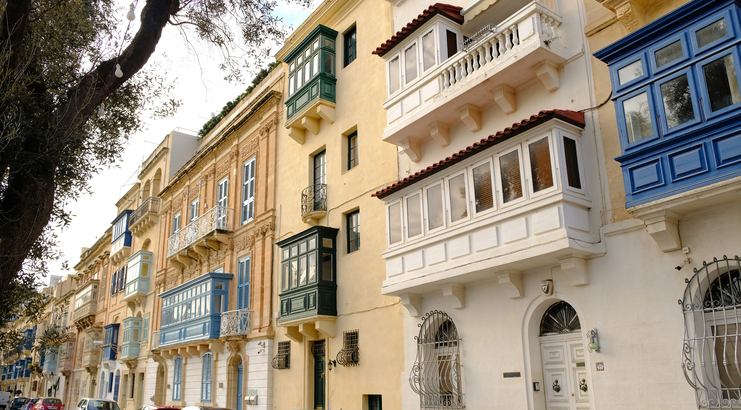Malta is forecast to fall short of its ambitious goal to fully phase out petrol- and diesel-fuelled vehicles by 2050, according to a previously unpublished state-commissioned PwC report.
The report highlights the challenges Malta faces in relation to energy generation, Government revenue, and labour training when it comes to establishing a cut-off date for the importation of internal combustion engine (ICE) vehicles, and describes Malta’s attempt to meet its climate change targets by electrifying the national fleet and cutting emissions from transport as “unattainable in the absence of complimentary policy actions”.
The audit firm, which was tasked with establishing a cut-off date for the importation and registration of ICE vehicles in Malta, found that even setting it as early as 2026 would not be enough to reach the CO2 target set for 2030, by when emissions should be 19 per cent less than they were in 2005.
“Based on the results of the fleet model and CO2 emission calculations for each of the scenarios considered, it can be observed that both the fleet targets and road emission targets set for 2030 are unattainable in the absence of complimentary policy actions,” the report reads, with reference to Malta’s aspiration to have 65,000 electric vehicles (EVs) on the road by the end of the decade.
The previously unpublished report was obtained by BusinessNow.mt through a Freedom of Information request.
It was first announced by former Prime Minister Joseph Muscat, who in March 2019 said that PwC had been commissioned to draw up a report on the impact and effects of a national changeover to EVs.
However, there has been no official mention of the report since then, with a 2021 green paper on the matter devoid of any indication of the results.
The draft report is dated 4th November 2019, and sheds light on the many considerations required when undertaking such a radical shift.
The PwC report consulted with a broad array of stakeholders, including state energy distributor Enemalta, the Ministry for Finance, and car importers.
The increased demand for electricity as the number of EVs grows mean that additional generation capacity would need to be deployed to address peak load demands. Enemalta stated that they would require around seven years to introduce additional capacit.
In June 2021 Minister for Energy Miriam Dalli announced a second interconnector between Malta and Sicily, and in February 2022 a €90 million plan to upgrade Malta’s energy distribution infrastructure was launched.
As regards Government finances, a staggering nine per cent of all state revenue comes from motor vehicle registration taxes, annual circulation license fees, and excise duties on petroleum products, which in 2019 amounted to €263 million.
Thus, PwC found that “any policy decision to restrict the importation and registration of ICE vehicles would therefore have a direct impact on government finances”. In this respect, the Ministry for Finance estimated that they would require between two and three years to develop a plan to mitigate the funding shortfall.
Meanwhile, the Car Importers Association warned that setting a cut-off date earlier than that of large countries like France, China, the UK and Germany could cause a mismatch between local demand and global supply, with automakers likely to plan production in line with demand in major global markets.
Importers also highlighted the implications that an early cut-off date could have on the labour force, with greater demand for workers trained to handle EVs during repair works and maintenance – skills that cannot be gained overnight.
The report analyses various cut-off date scenarios at two-year intervals from 2026 to 2034, taking into account criteria such as the impact on the environment and the energy grid, the target to introduce 65,000 EVs on Maltese roads by 2030, impacts on taxation, supply side considerations and socio-economic impacts.

The report concludes that the earlier the ICE cut-off date is announced, the more positive the environmental impact is expected to be, although it would nonetheless fall short of Malta’s targets.
On the other hand, stopping the importation of ICE vehicles earlier is likely to be a greater risk when it comes to the socio-economic dimension and supply-side of the market.
“Hence, the challenge for the policy maker is to achieve a balance between these various criteria in arriving at the optimum ICE cut-off date, given the conflicting nature of these factors,” the authors conclude.
“Ultimately, it is evident that there is no clear-cut scenario in determining a single ICE cut-off date and any date that is chosen will always involve some sort of trade-off.”
The document can be downloaded from the link below:
WATCH: MEPs in dialogue – Financial institutions and over-regulation
This is the third in a series of debates designed to engage citizens in the lead-up to the MEP elections ...
ICT sector makes up 10.3% of Malta’s economy, most in EU
Malta was also in the top spots for value added from ICT services and ICT manufacturing
Building and Construction Authority CEO resigns days after fatal construction incident
Jesmond Muscat quits after less than two years in the role






